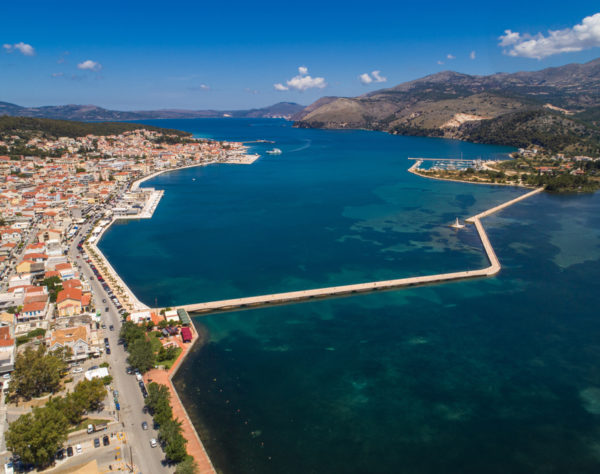
LESVOS, A MUST VISIT ISLAND
The island where time stands still..
Ferry boat from Chios or flight from Athens and you will arrive at Mytilene, collect your rental car and head off on your adventure!
Capital Mytilene, Mytilini or Mitilini – Byzantine castle, mosques, roman boathouse, statues, cobbled streets, harbour, mansions, churches and museums, neoclassical, kafenio, traditional food … you name it, it’s here to experience.
Dating back to before 1000 BC, Mytilene is both the capital and cultural heart of Lesvos Island. Ancient ruins are nestled near modern buildings, and a slight Turkish influence can be seen within many of the buildings.
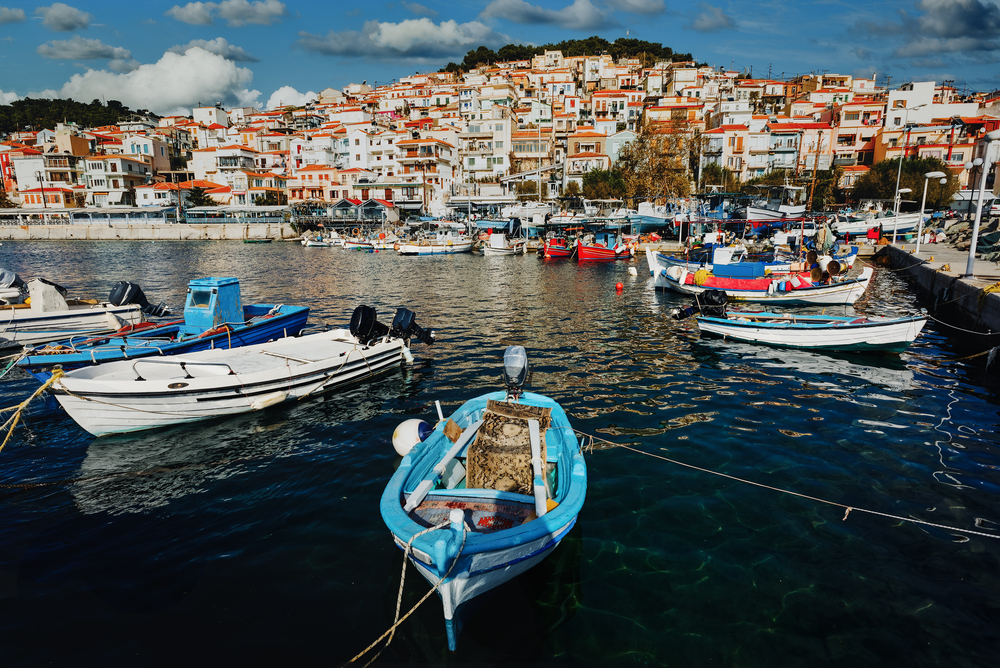
Mytilini is the main town on the island, and it’s one of the prettiest in Greece. The waterfront is lined with sailboats and fishing boats — some turned into homes with clotheslines strung across the deck — and the giant dome of the Church of Agios Therapon entirely dominates the skyline. The center is fairly small and can easily be explored on foot, lots of cobbled streets so make sure you are wearing suitable footwear.
Mytilini is also a university town, so there is a good vibe and the entire waterfront consists of open cafes where the Greeks drink frappe like it’s water and play riotous games of backgammon while the sun sets over Turkey, which is just an hour away by boat. There are plenty of cozy cafes, cool bars and tavernas in the center, where you can spend an entire afternoon eating and watching people.

Mytilene is the birthplace of Sappho, mentioned in literature for over 2000 years, and home to most of the cultural artifacts of the island. Some of the city’s top sights are the Castle of Mytilene, the Archaeological Museum, the Church Agios Therapon and the traditional markets of Ermou Street.
Towering above the city is the Castle of Mytilene, which covers 60 acres and is one of the largest in all of the Mediterranean.
Heading north out of Mytilini we are heading up the coast to Mantamados.
MANTAMADOS
On the way to Madamados you will come across Lakos Mankatsa or the Mankatsa Ditch Waterfall. The waterfall is approx. 12 metres high with a 1-1.5mtr deep water basin. The huge dark rocks stand at approx. 12-20mtrs in height and are an inspiring sight to see – not the highest in the world but still beautiful. You can swim in the basin and also go zip-lining.

Madamados is more a stopping point than a visit but the tiny town is absolutely worth a walk-through. Cobblestoned streets, fallen-down houses, and Greeks talking loudly in butcher shops and tavernas. This place is also very well known for its honey production, so pick up a bottle of very tasty local honey and enjoy it during your holiday.
SKALA SYKAMINIA
The little harbour is crowded with colourful fishing boats and a small boardwalk lined with restaurants and cafes. The first thing you will noticed in Sykaminea are all the street cats. From the moment you get out of the car you will be followed by a group of cats. They are very well fed and looked after, so not like the usual street cats you might see. You might start to feel like the Pied Piper!
Tucked away in the mountains, Sykaminea offers stunning views, fresh air, and seemingly untouched natural beauty. In addition, the beach is only 3km away, offering easy access to plenty of seaside activities.

The town’s highlight is the characteristic Church Panagia Gorgona, situated on a rock over the sea. Sykaminea is the birthplace of the Greek writer Stratis Myrivilis.
One of the most popular activities in this area is fishing and old men are known to join tourists, giving them tips on local fishing spots and generally spending the day drinking and talking,
You can choose to visit Petra on the way to Molyvos or on the way back, we are visiting on the way back, going to Molyvos first.
From Skala Symaminea head across the top of the island to the west to the hot springs at Eftalou – a couple of kms.
EFTALOU
The volcanic origin of the Island has left a very precious heritage – hot and healing mineral springs. At Molyvos are the Eftalou springs with their newly renovated bath house with individual private tubs or communal bathing. Recommended for rheumatism, arthritis, sciatica, neuralgia, skin diseases, kidney and gall stones and gynecological complaints (probably local wisdom rather than medical research) these are probably the most popular baths on the island due to their proximity to Molyvos. You can swim in the sea or sit along the shore where the hot mineral water seeps through the rocks and mixes with the sea water in warm currents.
The spring water has a temperature of approx. 43 to 46 degrees. The spring is located next to the sea on the beach. You can enjoy the wonderful water in a big basin made of natural stone which is covered by a dome or in separated, private baths where you can control the temperature with cold water taps. The water contains radium, chloride, sodium, Chloric lithium, potassium, calcium, aluminium sulphate, calcium, magnesium, iron, manganese, bromide, natrium, nitric potassium, aluminium hydrogen fluoride and silicic acid. After reading all those elements I’d say it’s kill or cure!
MOLYVOS TOWN AND HARBOUR
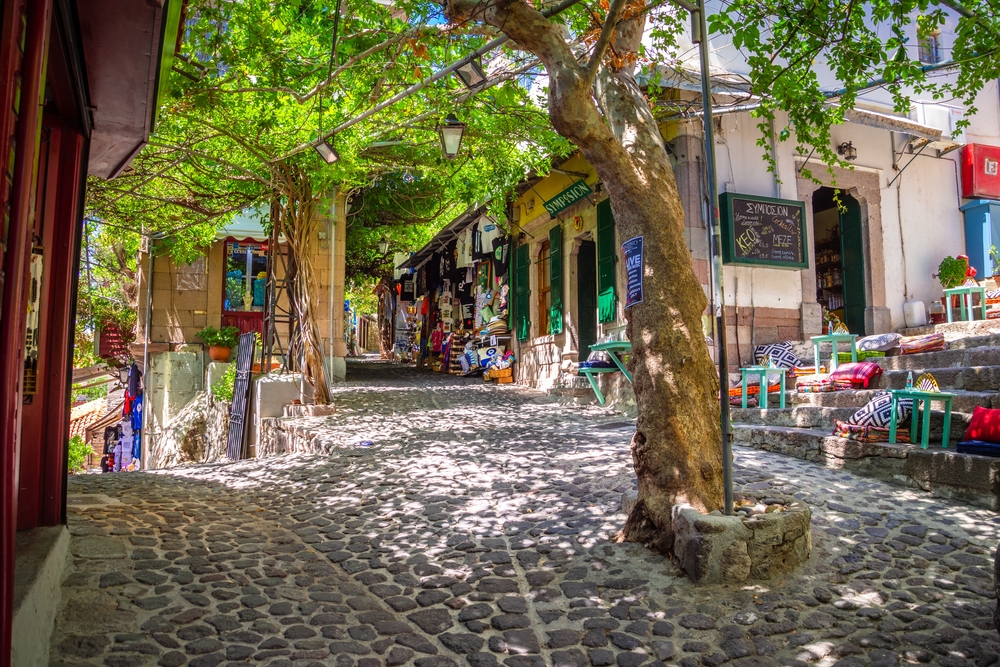

A quiet little seaside town, crowned with a castle, and hiding ancient ruins, Molyvos is easily one of the nicer places to go in Greece as a whole. The town is built into a hillside with a medieval fortress overlooking the village. It’s a protected site, and many of the mansions in Molyvos date from the late 18th century.
The way up to the fortress is a labyrinth of old streets winding through courtyards, balconies, and clustered homes made of stone. There are picturesque views from the top of the hill and from the water.
The town is small, and easily explored by foot. Walk around the traditional alleys, explore the medieval castle (many cultural events take place there during summer), and finish your day in one of the restaurants along the pretty harbour of the village. You can also go Island hopping from here.
PETRA
Petra is another picturesque traditional village with a long sandy beach. It’s very close to Molyvos, only a 5-minutes’ drive. If you want to walk around a village on the island of Lesvos, this is the place to do it. With many streets being closed off to vehicles and even motorcycles, the town specifically caters to those who are on foot. Discover traditional markets, well-manicured streets, and a stunning coastline, all reached within minutes.
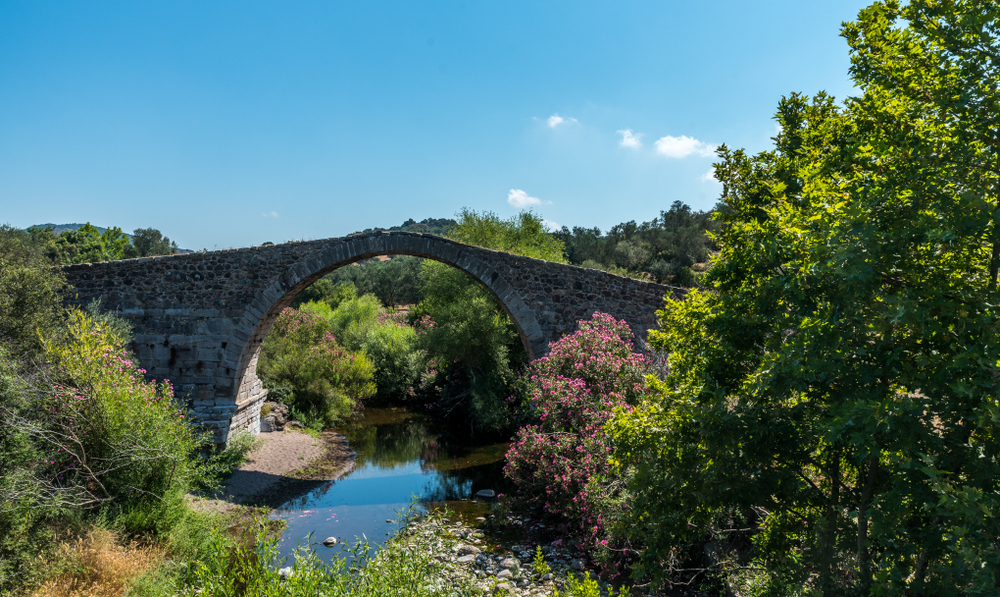
Part of the town surrounds a big rock and on the rock sits an ancient church, the Church of Glykfylousa Panagia, dating from 1747. There are 114 steps to get up, once you reach the top you’ll be rewarded with panoramic views of Petra, the islands and the Aegean Sea.
Don’t plan on rushing through Petra, there are plenty of cozy cafes tucked into alley ways and surprise exhibitions by local artists. You won’t be disappointed.
We are now heading west to Sigri and the Petrified Forest, but enroute there is a quaint and sleepy little village that is worth a visit – Vatoussa. The drive itself is fantastic, with amazing views of the mountains and the Mediterranean.
In Vatoussa you may see the farmer herding his sheep on horseback, locals riding side saddle on their donkeys… Greece how it used to be so worth stopping off and having a look. If you fancy checking out a winery, head south for a few kms from Vatoussa to Chidira.

METHYMNEOS
The vineyards of Methymnaeos are located at an altitude of 300 meters in the crater of the inactive volcano of Western Lesvos, near the village of Chidira.
Methymneos Winery holds a prominent place in the winemaking tradition of Lesvos, that dates back to ancient times. Methymneos wine combines the light aromas of honey and citrus fruits with an equally beautiful taste.
The exceptional characteristics of this wine come from the excellent variety of vineyards located in the western part of Lesvos. In 1985 Dimitris Lambrou, editor of the historical research magazine “Davlos”, replanted the Lesvos Grape Variety, urged by his own belief that the specific variety has great winemaking potentials. This important initiative led to the beginning of a new era for winemaking on the island.
SIGRI – THE HIDDEN TREASURE OF LESVOS

Sigri is the land that time forgot, the most remote tourist destination in Greece. The village is a chaotic hodgepodge of summer houses, rent rooms and hotels clustered around a small fishing harbor, a Turkish castle, and the town beach. In front of the dock is the Cavo d Oro fish taverna, one of the best on the island and there are several others in the small village square that overlooks the enormous bay which is sheltered by Nisopi island populated only by telephone poles.
The lay of the land and its relationship to the sea is multidimensional so there is a lot to see and do here. There is a Turkish castle, built in 1746 by the Sultan Mehmet I, and this fortress protected the harbor. The stones came from quarries in Sarmaisakh, Turkey. A quite unknown fact about Sigri is the wind which keeps this part of Lesvos cool when the rest of the island is baking hot.
The beaches are simply breathtaking and depending on the time of day, you can have one all to yourself, even in August. The snorkelling south of town off the rocks is good with plenty of fish and even an octopus or two that you can make friends with.
It’s a dirt track to get there so you will have to walk (can’t take rental cars on unsealed roads) but just follow the dirt track to Eressos. The beach at Tsichlioda is at the end of a long valley that looks like the Alaskan Tundra. You can get close to the sea but it can be rough on your car so take it slow. On the south eastern end (on the left if you face the water) is where the Tsichlioda river meets the sea. The area is a haven for migrating birds and is featured in Richard Brook’s book ‘Birding in Lesvos’
.
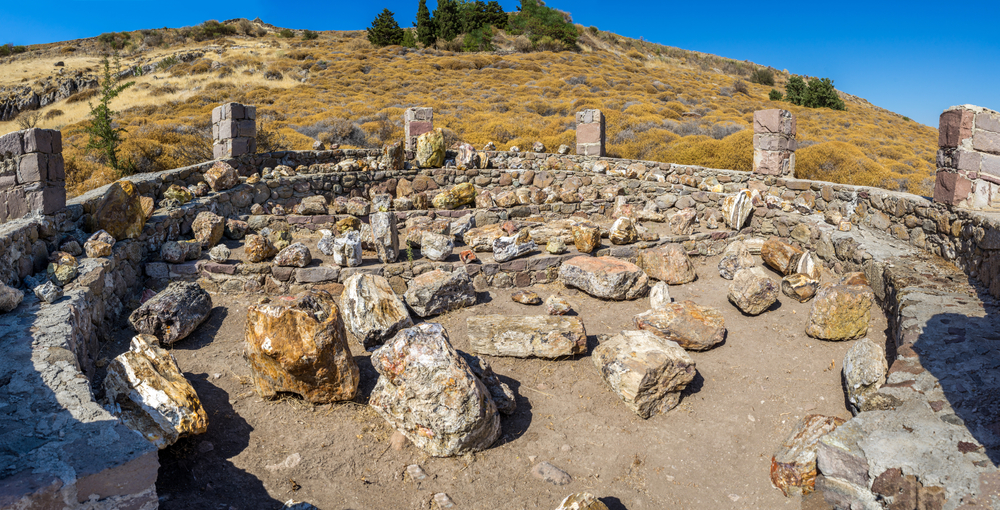
THE PETRIFIED FOREST
The Petrified Forest was formed 20 million years ago when a volcano exploded in this part of northern Lesvos covering the entire area with ash and lava. Some of the trunks are 20 meters in length and 3 meters in diameter and you can even see the root systems.
The forest goes all the way to the sea and you can find pieces of petrified wood among the pebbles on the beaches of Sigri. The caldera of the volcano is the area which contains the villages o f Vatousa, Xidira, Antissa and Zithra. If you stand in many spots in and around these villages you can see the walls of the caldera as well as mounds of ash. This is what makes the soil in this part of Lesvos so good for growing grapes, like Santorini.
AGIASOS
On the pine and olive covered slopes of Mount Olympus you will find the Village of Agiasos. The greenery here is stunning. There are plentiful platanos, apple, chestnut, pear and cherry trees as well as varieties of other trees and shrubs. The town itself is a traditional village of narrow stone streets and picturesque lanes. Many of the houses have projecting upper floors known as sachnisia with wooden balconies decorated with pots of beautiful colourful flowers.
Some of the women of Agiasos still spin and weave. For many years the town was known for its pottery and this tradition is carried on today. There is also a high level of wood-carving. The craftsmen make beautiful carved wooden icons and furniture.
THE PILGRIMAGE
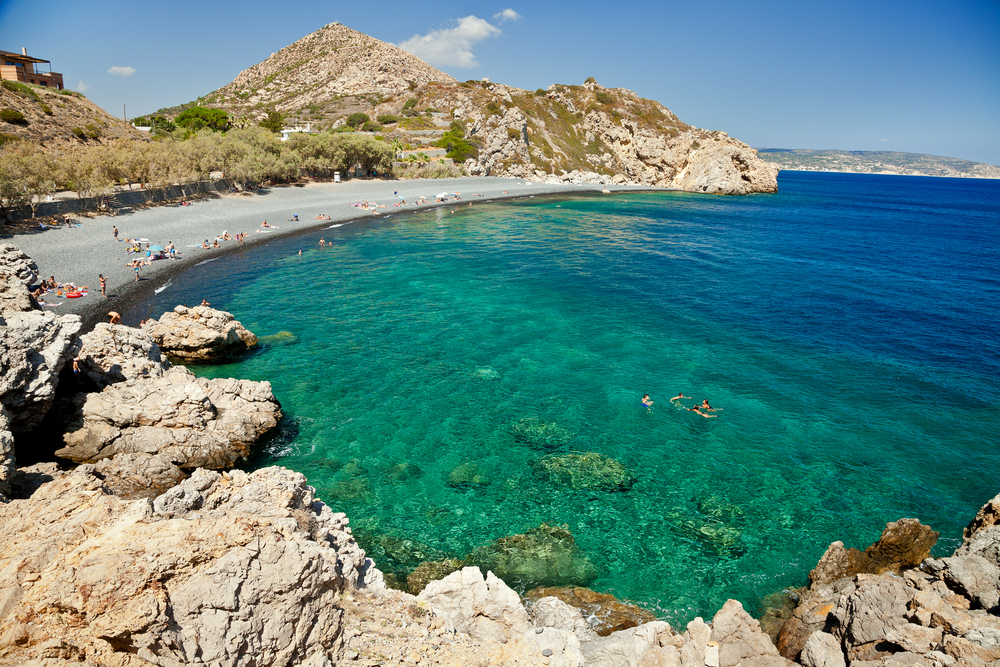
Agiasos is known throughout Greece for the church to the Virgin Mary, the Panagia ti Vrefokratousa in the center of town. Historically Pilgrims used to walk the old stone road from Mytilini to pay tribute to the miracle working icon, brought here from Jerusulem by the imperial priest Agathon the Ephesian in the year 803. In 1701 Agiassos, because of a miracle by the Blessed Virgin who cured the Turkish administrator of an illness, was absolved by Sultan’s decree of having to pay taxes to the Ottoman government and many people moved there until it was recinded in 1783.
Pilgrims still come throughout the year but especially on the eve of the feast day of the Panagia (August 15th). The worshippers come into the monk cells and the church enclosure; many having spent 15 days waiting outside. Some still walk from all over the island to give offerings to the icon. After the service, the icon is paraded around with great pomp and ceremony. The festival attracts many merchants and there is a great deal of celebration in the nightspots of the town. It is quite a party and the musicans keep it going until dawn.
PLOMARI
Plomari is a very picturesque village, with colourful houses, very friendly locals and spectacular sea views. It is the second largest town on the island, after the capital, and the southernmost town. Traditional building facades, winding streets, colourful stone homes, and an easily accessible port create a picture-perfect setting that must be seen to be believed. Fresh produce is served from roadside stands, in local cafes and restaurants, and even from trucks within just a few minutes of the food being picked.
After exploring the hills of the city, the city square offers a number of amazing coffee shops and of course Ouzo shops.
Plomari is also noted as the Ouzo Capital of Greece. The Barbayannis distillery, was established in 1860 by the same family that own it now. They triple distil, 42-48%, using traditional methods and export to over 30 countries worldwide. There are other distilleries in Plomari and on the road to Mytilini, make sure to visit at least one of them! The World of Ouzo Museum of Isidoros Arvanitis is located in a wonderful olive grove just a few minutes from the village of Plomari. You will have a chance to see the ouzo production and do some sampling too (not if you are driving though, not at 48%!)
And don’t forget to go to the beach! Agios Isidoros Beach, with its unique pebble is located two kilometers from Plomari. The name was given to the beach from a nearby church called St. Isidoros. It’s been voted as the seventh best beach in Greece in an online poll about “Clean Beaches” and it’s been awarded with the Blue Flag of European Community since 1992. A beautiful pebbly beach with crystal blue waters.
GERA
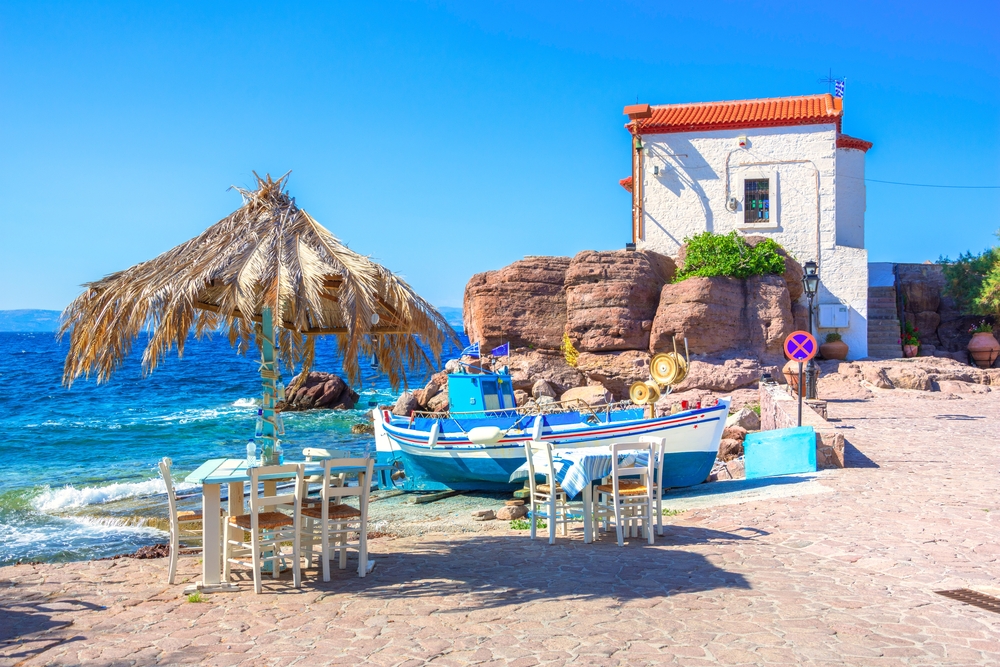
We have saved the chilled and relaxation stop ‘til last! Relaxation! Gera is the place to go for chilled, R&R time (not that the rest of the island goes that fast). Located on a bay with emerald water, the town offers thermal baths, pristine beaches, amazing spas such as Therma Spa, which is well worth to visit. This is a town you stay in when you want to relax, enjoy yourself, get rid of stress, and just do not a lot.
The picturesque views, clear water, and slow pace make you feel like you are being transported to ancient Greece with every step you take. With fresh sardines caught daily in the bay. Surrounded by olive grove. Wetlands with wild birds and animals. Enjoy your last stop!
Back to the airport, safe travels! Content sources include: goatsontheroad.com justonewayticket.com greeka.com lesvos.com freecandie.com good o' google





